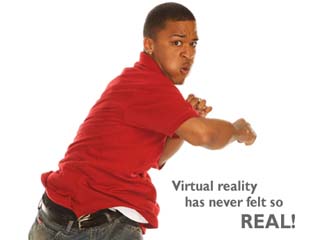

Something big is cooking in the Apple labs. On Tuesday, Apple was granted a patent for a 3D screen that does not require special glasses. In this patent, each pixel is projected onto a reflective, textured surface, and then bounced into the viewer’s right and left eye separately to produce the 3D effect.
At present, though, no one knows what Apple plans to use the 3D technology for, and the company hasn’t announced any plans to release a 3D TV or monitor. Until then, we’re left to guess as to whether Apple’s method will be better at producing 3D images than Nintendo’s, Sharp’s or Toshiba’s.
Possible applications, should Apple ever turn this patent into a device, may include 3D gaming on your Mac or a serious upgrade to Apple TV, which is already HD compatible. Some other applications of this technology, mentioned by Apple in the patent include,”…medical diagnostics, flight simulation, air traffic control, battlefield simulation, weather diagnostics, entertainment, advertising, education, animation, virtual reality, robotics, biomechanical studies, scientific visualization, and so forth. “
Apple was not available for comment at this time.
(Image owned by Apple)

















